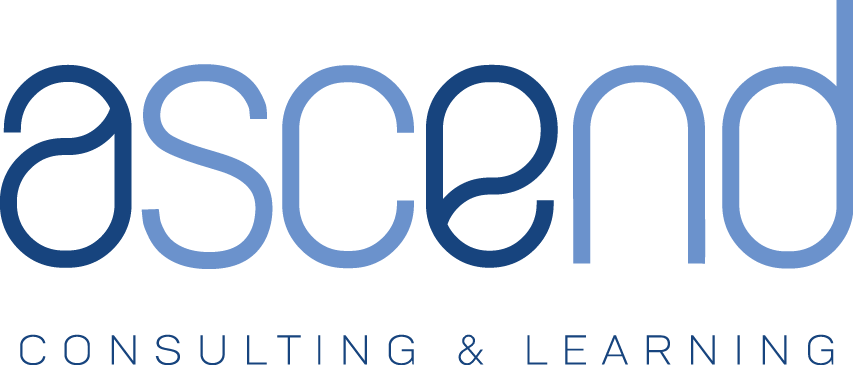In the first two parts of this blog post series, I described the business model canvas (BMC), a tool to help describe a business model, in depth. For Part 3 of this series, I will provide an example to illustrate how the BMC can be used to describe a business model and illustrate how it could be used as a planning tool for architecture and engineering (A/E) firms. If you missed the first two posts in this series, I suggest reading those first as they provide the background for the example I will use here. Links: Part 1 and Part 2.
The example we will use here is for a fictitious A/E firm, Green and Greener Designs (GGD). They are a full-service A/E firm that specializes in sustainable and environmentally friendly designs. We will dive deeper into GGD in future blog posts to illustrate how other management tools may benefit A/E firms as well. But for now, I will utilize the BMC to describe the existing business model of GGD and then look at how they could use this as a tool to help them plan a new service and determine how this may change their business model.

Business Model Canvas – www.strategyzer.com
Let’s start by looking at GGD’s existing business model with the help of the BMC above. Their customer segments (CS) currently consist of developers that are interested in sustainable design. GGD’s value proposition (VP) to these developers serves the functional needs related to building design and the social needs related to sustainability. They do this by establishing a customer relationship (CR) as a trusted advisor and their primary sales channels (CH) to these clients are through firm principals as seller-doers and through a thought leadership program. They are typically compensated for this value through a revenue stream (R$) of professional services fees.
In order to be compensated for this value, they require the key resources (KR) of their staff and of their brand as experts in sustainability. They key activities (KA) that GGD needs to excel at to deliver this value are problem solving and relationship building. The key partners (KP) they utilize are mostly limited to specialty sub consultants. In order to support this infrastructure, their primary cost structure (CS) consists of the labor costs of their staff and the non-labor overhead costs to support this labor. You can see how the BMC helps succinctly outline GGD’s business model at a high level.
We will now look at how GGD could utilize the BMC to plan a new service to fulfill additional needs of their developer clients. They currently serve the developers needs for building design and sustainability, but the developers also need to maintain their facilities and would like to maximize their profits. GGD believes that they can serve these two needs if they were to add retro commissioning as a new service. Retro commissioning would allow these developers to reduce maintenance and associated costs and to maximize profits over the long term through increased efficiency. Retro commissioning should also appeal to their client base of green developers as they are interested in conserving energy and these types of projects typically pay for themselves over the long term.

In order to offer retro commissioning as a new service, GGD will need to change certain aspects of their business model. The BMC is a great tool for quickly identifying what elements of the business model they will need to change and what the implications of this are. As illustrated in red in the BMC above, GGD will plan to utilize a commissioning expert in the role of a seller-doer as a channel (CH) to effectively sell this service. The firm will need a new key resource (KR) of retro commissioning expertise that will be provided by the expert as well. They will be compensated by a new revenue stream (R$) of service fees for commissioning. There will be a new cost (C$) to the business to pay for this new commissioning expert. This is GGD’s initial hypothesis for how their new business model will work.
Instead of diving into a detailed business plan or running out to hire this new commissioning expert, GGB pitches this idea to their developer clients. They need to know if this is a service that their clients are willing to pay for. In the course of doing this, GGD discovers a few pain points of their developers that will act as a barrier to this service. Their developer clients will have a difficult time obtaining the capital to pay for these services and are uncomfortable with the investment risk even though it will likely pay off over the years. It is time for GGD to think a bit more about how to serve these needs of their developer clients – they need to pivot their proposed business model.

Through conversations with their developer clients, GGD believes that the developer would utilize retro commissioning as a service if they did not need to provide the initial capital to pay for the service. The BMC above illustrates a business model GGD believes would allow them to accomplish this. GGD believes that an energy service company (ESCO) may be willing to pay professional services fees for energy auditing and retro commissioning in exchange for establishing energy savings performance contracts (ESPCs) with GGD’s developer clients. This will require that GGD establish a new customer segment of ESCOs shown in green above. They will need to view this relationship a little differently as they will be acting as a business partner to the ESCOs. The value proposition they are offering the ESCOs will be to facilitate the establishment of these retro commissioning ESPCs.
It’s time for GGD to get out of the building and talk to their new potential ESCO customers. When they pitch and discuss the idea to ESCOs, GGD gains some further insight into their needs. While the ESCOs are very interested in obtaining fully developed and qualified leads, they are not interested in the scale of the retro commissioning projects. They tell GGD that they would be interested if these projects were of larger scale.

GGD goes back to the drawing board and pivots their business model once again. The BMC canvas above illustrates their new business model. At this point, they have shifted away from providing retro commissioning as a new service and have developed a new plan that primarily utilizes the resources they already have. GGD will provide free energy audits to their existing green developer clients to develop EPSC leads for the ESCOs. GGD will perform these audits at risk, so this is a new cost to the business they must plan for. They will provide their new ESCO clients with developed ESPC leads and the ESCOs will compensate them in turn for the design services related to these contracts. GGD will need to be compensated at higher rates to offset the cost of the audit studies and due to the value they provide their ESCO clients with these developed leads. Their principals will be the primary sales channel to the ESCOs and this will be a business partner relationship.
At this point, GGD should probably begin to develop a more detailed business plan armed with all that they have learned from developing this new business model. The more detailed plan will give them a better idea of specifically how much money they will need to invest in the idea, risks associated with the plan, etc. The BMC, however, provided them a great tool to help develop the business model prior to developing the detailed plan. Had they jumped right into a business plan for the retro commissioning idea, they may not have discovered this new business model idea.

